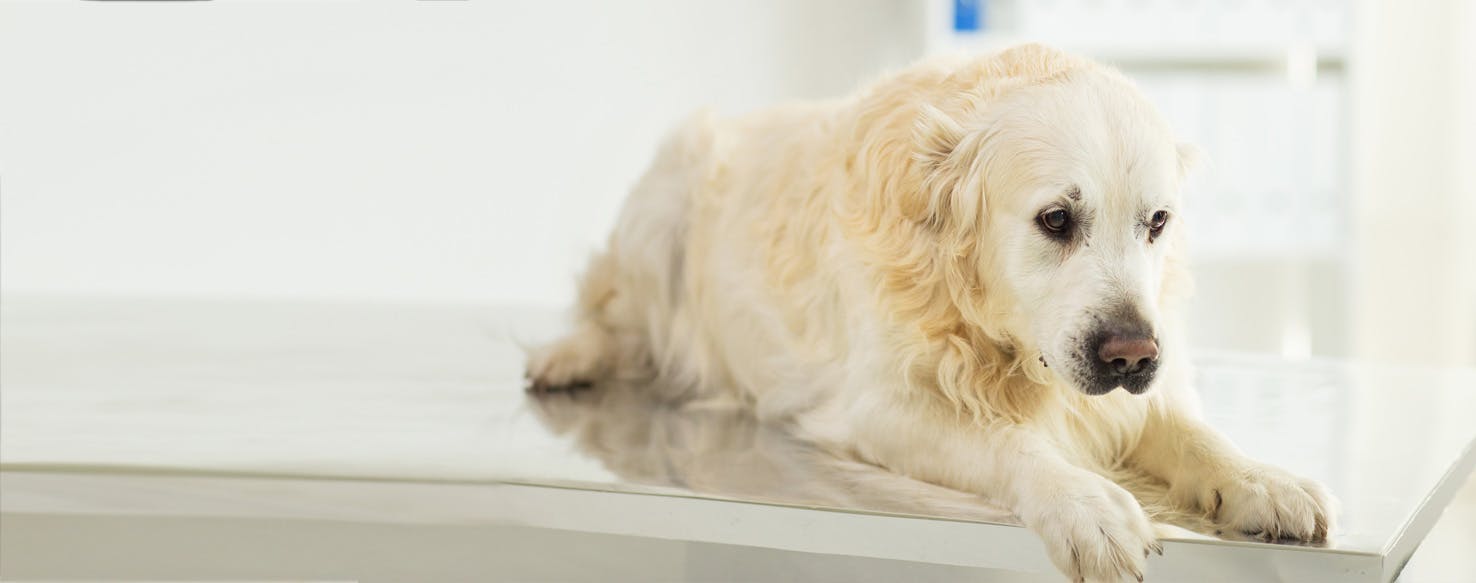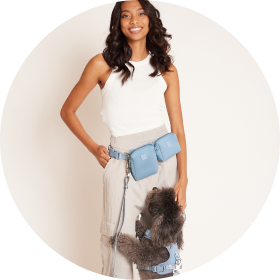- Home
- The Daily Wag!
- Senses
- Can Dogs Survive Parvo?

Parvo - the virus that sets fear in the hearts of doggo owners everywhere. If you've never heard of parvovirus, it's important that you read up, because it's a serious condition that can be fatal for pups!
Parvo is a life-threatening gastrointestinal illness that your dog can catch from the contaminated materials of another infected animal - think infected doggy poop, guys! The pups that are at the highest risk for parvo are young, unvaccinated pups who have high stress levels.
The scary thing about parvo? The speed at which it can affect your dog. A doggo infected with the virus can develop dangerous symptoms in 24-48 hours like vomiting, diarrhea, bloody stool, fever, septic shock, and heart stress.
The good news though? With quick reaction time and vet intervention, your dog can survive this deadly virus! That being said, it's important to know the signs that your dog is giving you that indicate he might be suffering from parvo.
Take a look at our guide below to learn about the body language cues your dog is giving you, the signs you need to look for, and what to do if your dog contracts parvovirus.
Canine Parvo is a dangerous, scary, and sometimes deadly disease that requires you to act fast and act smart. When determining whether or not your dog has parvo, it's important to talk to your vet immediately. There should be no time period where you're "waiting the virus out," instead, pay attention to the body language cues and the signs your dog is giving you so you can recognize as quickly as possible if something is wrong with your dog.
Your dog likely is suffering from parvovirus if they have any of these symptoms or a combination of them. Your dog will definitely develop a fever soon after contracting the virus, sometimes in as little as 24 hours.
Additionally, your pup will be lethargic, fatigued, and weak - a characteristic that is especially noticeable in active puppies. Soon after, vomiting, refusal of food, and diarrhea (oftentimes bloody) will plague your pup. In some cases, your dog will even have a fluid distention of his intestines, have a very weak pulse, and may even become victim to hypothermia.
Body Language
It's likely that if your dog is suffering, you'll notice! Parvo acts fast and it comes in intense bouts, so it's likely your dog's behavior will be very different from usual. Keep these body language cues in mind when determining if your pup might have been infected by the virus:
- Staring
- Shaking
- Cowering
- Panting
- Sniffing
- Weakness
Other Signs
But those signs aren't the only ways your dog will show you something is wrong. Luckily, the signs of parvo, though intense and fast, are pretty obvious, but make sure you're keeping an eye out on things like:
- Tachycardia
- Hypothermia
- Fluid Distention Of The Intestines
- Diarrhea
- Vomiting
- Lack Of Appetite
- Fever
Historically, parvo is a highly-contagious disease that your dog can catch relatively easily. Most often, it's young puppies who are not yet vaccinated that contract the virus, and also, puppies that are stressed usually have a higher risk of exacerbating or contracting the infection.
Typically, dogs who are older have a better chance of surviving the illness, but if caught quickly enough in puppies, they can make it, too. The causes of parvo in dogs are directly related to contaminated materials from another infected animal.
One of the most common causes of parvo is puppies eating the feces of an animal already infected with parvo. Any other contact with parvo-infected material with your dog's eyes, mouth, or nose will also cause him to contract the virus. Lack of proper vaccination, in addition to stress from another illness, can increase the risk of getting parvo, too.
Understanding how parvo happens and what parvo does is the first step in understanding how to combat it and what to do if your dog has it. Parvovirus is a contagious disease that causes severe gastrointestinal issues in dogs. But what does that mean, exactly?
Parvo affects the areas of dogs that are highly susceptible to viruses, meaning the areas that have rapidly dividing cells, like his small intestine. The virus is so dangerous because it acts so quickly, and also because it attacks the hematopoietic progenitor cells in your dog's lymphnodes and blood marrow. This is exceptionally dangerous because it makes your dog far more susceptible to sepsis.
This virus can take over your dog's system in as little as 24-48 hours, so it's important to ensure that you're acting fast and taking him to the vet immediately. There are two types of parvo your dog can contract, intestinal and cardiac. The cardiac parvo is very rare and only affects puppies that are still in the uterus, resulting in stillbirth and death.
For starters, making sure your young puppy knows commands like "no" and "leave it" are the quickest ways to avoid him getting in contact with things that you don't want - like infected feces. However, you cant see everything your puppy does, so these commands won't always be beneficial.
Train your dog to deal with vaccinations, one of the best ways to ensure that your pup won't get parvo. Shots aren't fun, especially for puppies, but by rewarding him after, he will associate the shot as a positive experience, making it easier the next time he needs a vaccination. It's possible that if your dog contracts parvo, he'll need a blood transfusion as well, so, more needles - that training should really come in handy.
Following that, he'll likely need electrolyte treatments, another process you should try to prepare him for and reward him for after. Additionally, teach your dog to enjoy solitude for a while. Dogs who have parvo are contagious for up to six weeks after their treatments, so ensure you're giving your dog a ton of extra attention - there won't be any dog park socials for awhile.
Have questions or concerns about your pet?
Chat with a veterinary professional in the Wag! app 24/7.
Get Vet ChatWritten by a Great Dane lover Hanna Marcus
Veterinary reviewed by:
Published: 02/06/2018, edited: 04/06/2020
More articles by Hanna Marcus

